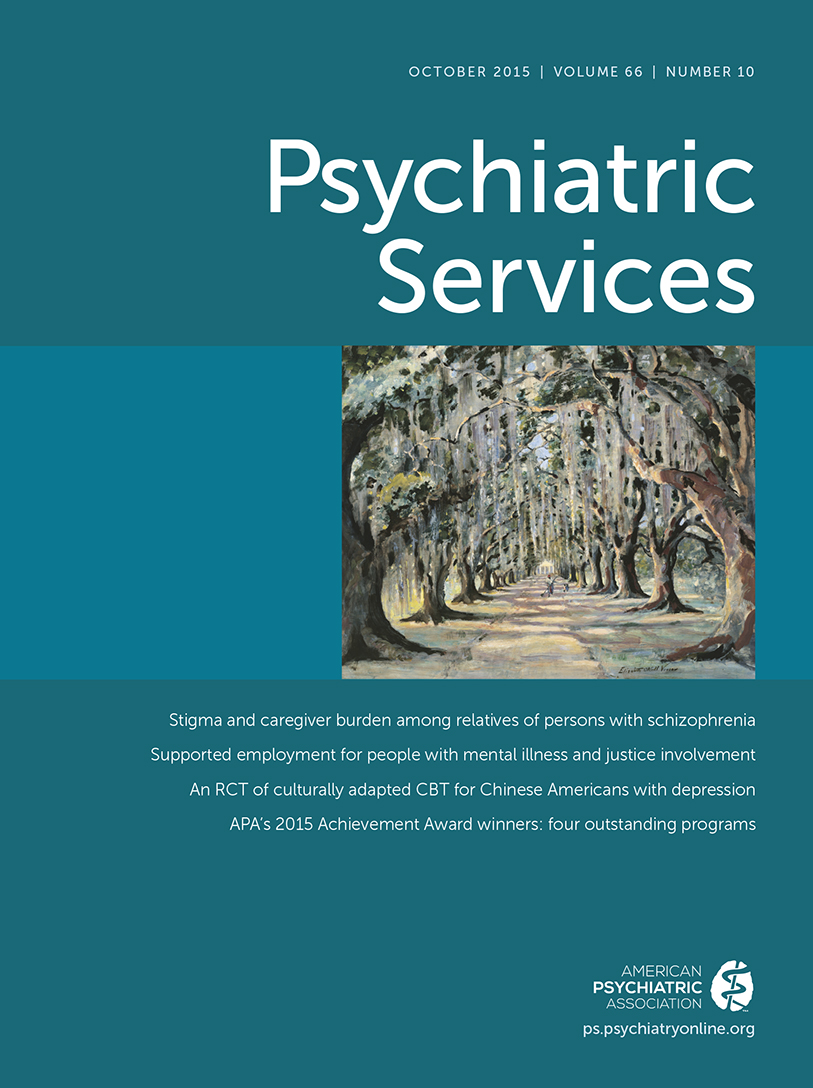What Can We Do About Stigma?
The study by Allerby and colleagues in this issue focuses on stigma experienced by relatives of individuals with mental illness in the Swedish COAST Study. Stigma’s mark—shame and disapproval—extends beyond individuals who struggle with mental illness, touching their families as well. So-called “associated stigma” affects family members or close friends. Blame and “contamination” are particularly salient dimensions of associated stigma. It was not long ago that the “refrigerator” mother was thought to cause schizophrenia, underscoring the fact that even early causation theories pointed a blaming finger at parents. Families also experience “anticipated stigma” in which they avoid circumstances or events, concerned about others’ stigmatizing attitudes and beliefs.
What are the impacts of associated stigma? The COAST study showed that stigma contributed to worse quality of life and increased burden. At the National Alliance on Mental Illness (NAMI)–NYC Metro, we hear from family members who feel stress and worry that others—friends, family, and associates—judge their family’s private life, medical treatment choices, and genetic traits. Many say that stigma delayed them from helping their relative seek treatment and interferes with their family relationships and ability to pursue support. They acknowledge frustration and sadness when trying to explain the cause of illness to others. Embarrassment can ensue when people find their relative’s behavior socially unacceptable. These experiences cause family members to withdraw from social situations and even publicly minimize or conceal their relative’s condition. They feel discouraged and may give up hope for a good quality of life and choose to withdraw from their ill relative, even though being a part of a well-functioning family is important to recovery.
Is associated stigma still a problem? Has society become more enlightened and accepting? Advocates, consumers, and family members have undoubtedly made progress in combating stigma and associated stigma. The COAST study showed that only 18% of family members of individuals with schizophrenia reported experiencing stigma. The authors give possible reasons for this finding: family members were recruited from outpatient clinics rather than from family-oriented advocacy groups or family network meetings, and less than one-tenth of participants lived with their ill relative. It is also likely that the culture and services provided in Sweden helped to minimize stigma. If stigma is measured only among family members of individuals receiving services, then those whose experience of stigma is severe enough to inhibit service use have no voice. Many studies have demonstrated far higher rates of associated stigma than found in the COAST study; undoubtedly, the prevalence of associated stigma is influenced by many issues, such as culture and education. It is not surprising that in the community of individuals served by NAMI, rates of associated stigma seem to be far greater.
What can we do about associated stigma? We should continue to call attention to it and educate the public on how stigma, including associated stigma, impedes help seeking and treatment participation. NAMI works to reduce the emotional, mental, and economic toll caused by damaging stereotypes, prejudicial beliefs, and discrimination. NAMI’s local affiliates offer free evidence-based programs, such as the 12-week Family-to-Family education program for family caregivers of individuals with mental illness. NAMI–NYC Metro has recently completed an evaluation that replicates initial findings about the effectiveness of Family-to-Family. NAMI offers a host of other programs, including Ending the Silence, Provider Education, and In Our Own Voice.
Beyond services and support, NAMI is initiating an action-based campaign, Stigmafree, to eliminate barriers and stereotypes that so often prevent people from getting needed help. Individuals, companies, campuses, community groups, and faith communities will be challenged to take the pledge to be stigma free and agree to learn about mental health; to see the person and themselves, not the illness; and to take action. NAMI–NYC Metro has initiated an award-winning social media–based mental health campaign called #IWillListen (www.IWillListen.org) to create awareness of the prevalence of mental illnesses and reduce the stigma associated with them. #IWillListen encourages people to listen to their friends, family members, and colleagues with an open mind and without judgment when it comes to mental health. Many schools, businesses, and communities have used the #IWillListen program at their campuses, offices, and locales to raise awareness of mental health. We cannot afford complacency.



